 You’ve chosen an uncertain path.
You’ve chosen an uncertain path.
You’ve adopted an inconvenient lifestyle.
You’ve embarked upon an unconventional journey.
You’ve felt the voice inside you growing more urgent.
You’ve committed yourself enough so you can’t turn back.
IN SHORT: You’ve decided to play for keeps.
This is the critical crossroads – the emotional turning point – in the life of every young artist.
I’ve been there myself, and here’s a list of suggestions to help you along the way:(Read part one here, part two here, part three here, part four here, part five here, part six here and
part seven.
1. Be more selfish with your work. Everything I write is a conversation with myself. I write to me, and I write for me. And to my surprise, that’s precisely what makes it so readable. In fact, I once received an email from a reader who thought I was stalking her. She said my work directly related to her life, almost as if I was in the office with her on a daily basis.
Which is ridiculous. I only showed up once a week.
The point is, the more personal your material, the more universal your message. If you want to play for keeps, play for you. Life’s too short to enroll yourself in a system bent to the desires of others. Plus, when you’re selfish with your art, when you make it for you and nobody else, the passion you bring to the work will carry it to market.
And even if it doesn’t, at least you still like it. As Miles Davis once said, “An artist’s first responsibility is to himself.” Are you following the script people envisioned for you, or follow your own artistic inclinations?
2. Practice creative promiscuity. In the art world, volume is the only vehicle that matters. Prodigiousness is the only path that counts. That’s been my strategy since day one: Out execute the competition. Because even though I wasn’t the best, even though I wasn’t the smartest and even though I wasn’t the most experienced, I still deployed more work than anybody. And by virtue of volume, my brand automatically elevated.
That’s the advantage of contributing to an ongoing body of work: It doesn’t just create credibility, it enables access. It provides multiple entry points for your audience. And that’s when people in China start talking about your work.
Unfortunately, most young artists trap themselves on the treadmill of better. They let perfection become the gateway drug to procrastination. If only they thought like Stravinsky. He said, “I would go on eternally revising my music were I not too busy composing more of it.”
That’s how he constituted a respectable artistic output, even at a young age: By hunkering down, shipping imperfect work and moving onto the next piece. Be honest with yourself: Do you really need another round of edits on a book nobody’s going to ready anyway? Just get it done. Get it to where you can smell it. Otherwise it’s not real.
Remember: The infinite regression of better is the enemy of done. What are you waiting for?
3. Fight the forces that fragment your focus. From digital distractions to shiny object syndrome to excessive planning to attending pointless meetings with amateurs who do nothing but brainstorm art projects they’re never, ever going to execute, you can’t allow yourself to get sucked into the vortex of the inconsequential.
Otherwise, by the time you finally do sit down to create, you’ll be rendered powerless to express anything that matters.
The solution is to carve out a ritualized creative schedule, and commit to sticking to it every day. Even if you’re tired, sick, annoyed, blocked or busy – you still have to show up. That’s what it means to play for keeps. As Tchaikovsky said, “Composition is a daily function that I feel compelled to discharge. I compose because I am made for that and cannot do otherwise.”
What’s more, installing a daily artistic regiment has myriad benefits. First, you create a healthy amount of self-pressure. This keeps your accountable to yourself. Second, you establish a good working rhythm with your creativity. This helps you spot entry points for entering into flow. And third, you train your body to respond to your environment. This keeps you in tune with your surroundings, listening for what wants to be written, instead of deciding what to write.
Remember: Distraction is a highly addictive drug. Don’t fix at the expense of your focus. Is what you’re doing, right now, taking you away from your art?
4. Mash life into art. Don’t tell me there’s nothing new under the sun. The damn thing 864,938 miles in diameter. If you can’t say something new, you’re not trying very hard. Here’s the reality: If you can build a unique enough inspiration pool that nobody can replicate, your work will be unrivaled. If you can ask yourself a unique enough question, nobody else’s answer will be able to compare.
Fortunately, the world around you is just waiting to be sampled. You simply have to live life with your eyes open and comment penetratingly on what you observe. As Stravinsky once wrote, “I stumble upon something unexpected. It strikes me. I made note of it. And at the proper time, I put it to profitable use.”
Never forget: Creativity is the highest form of active listening. If you’re not inspired, you might want to have your hearing checked. How could you live your life in a way that your art naturally gets done over and over?
5. Create a mythology around your art. When brandtag was released, I worked just as hard on the promo video as I did on the art itself. And here’s why: People are buying more than just your work; they’re buying the humble beginnings that first ignited your work.
Did you live in your car? Traveled to Africa alone? Work tirelessly out of your garage with your business partner? Shack up with your parents for two years, eight months and twenty-nine days? Awesome. Find the unique experience that first fueled your creative work and package and deliver it. Ideally, in the form of a creation myth. This infects people with your vision, helps them see the world as you do and enables them to join your brand – not just buy it.
As cartoonist Hugh Macleod wrote, “We humans seem to need creation myths, somehow. They manage to articulate who we really are, somehow. The help explain our core values, somehow. And for whatever reason, really successful people are even more likely to have them, even more likely to need them, somehow.” What’s your Garden of Eden?
6. Remain a vivid presence. Toward the end of his career, the general public no longer gave Stravinsky’s music the enthusiastic reception of his early days. And even though he experienced frequent bouts with depression, he still said something that has always stuck with me:
“The attitude of the public never made me deviate from my path.”
Therein lies attitude of someone who plays for keeps: He’s willing to suffer quietly. He’s willing to persist when nobody shows sympathy or understanding for what he’s doing. And he’s willing to stand up in the face of hostile indifference and remind people that he’s not going away.
Along your artistic path, maintaining your presence will depend on how you respond this resistance. It will depend on what happens when you hear that inner voice of hesitation telling you throw in the towel. What would happen if you abandoned yourself during trying times?
REMEMBER: When you’re ready to play for keeps, your work will never be the same.
Make the decision today.
Show the world that your art isn’t just another expensive hobby.
LET ME ASK YA THIS…
Have you committed with both feet yet?
LET ME SUGGEST THIS…
For the list called, “52 Random Insights to Grow Your Business,” send an email to me, and you win the list for free!
* * * *
Scott Ginsberg
That Guy with the Nametag
Author, Speaker, Entrepreneur, Mentor
[email protected]
 Never the same speech twice.
Never the same speech twice.
Now booking for 2011-2012!
Watch The Nametag Guy in action here!
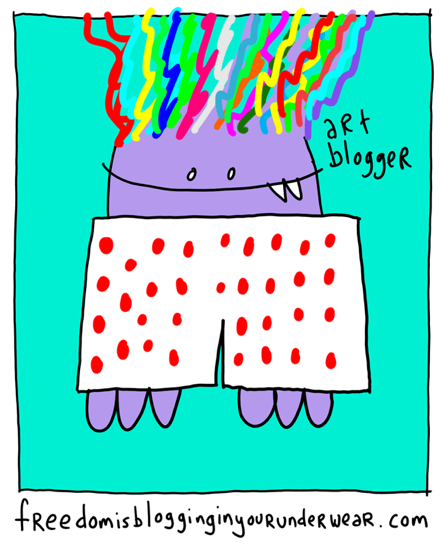
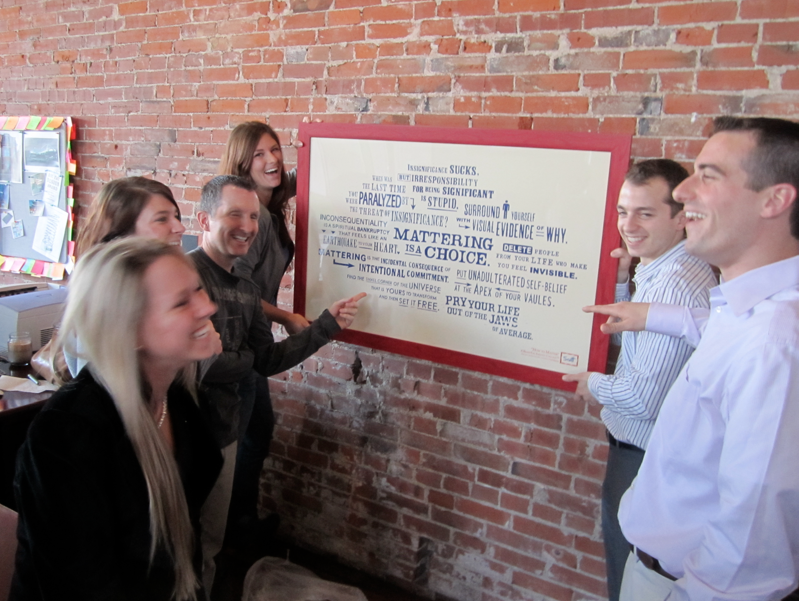 My job is to help companies make their mission more than a statement, using limited edition social artifacts.
My job is to help companies make their mission more than a statement, using limited edition social artifacts.
 Listening is overrated.
Listening is overrated.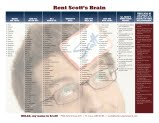 “I usually refuse to pay for mentoring. But after Scott’s first brain rental session, the fact that I had paid something to be working with him left my mind – as far as I was concerned, the value of that (and subsequent) exchange of wisdom and knowledge, far outweighed any payment.”
“I usually refuse to pay for mentoring. But after Scott’s first brain rental session, the fact that I had paid something to be working with him left my mind – as far as I was concerned, the value of that (and subsequent) exchange of wisdom and knowledge, far outweighed any payment.” You’ve chosen an uncertain path.
You’ve chosen an uncertain path.
 Not everything can be comfortably quantified.
Not everything can be comfortably quantified.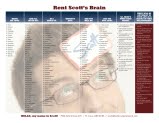 “I usually refuse to pay for mentoring. But after Scott’s first brain rental session, the fact that I had paid something to be working with him left my mind – as far as I was concerned, the value of that (and subsequent) exchange of wisdom and knowledge, far outweighed any payment.”
“I usually refuse to pay for mentoring. But after Scott’s first brain rental session, the fact that I had paid something to be working with him left my mind – as far as I was concerned, the value of that (and subsequent) exchange of wisdom and knowledge, far outweighed any payment.” You’ve chosen an uncertain path.
You’ve chosen an uncertain path. Good brands are bought — great brands are joined.
Good brands are bought — great brands are joined. 
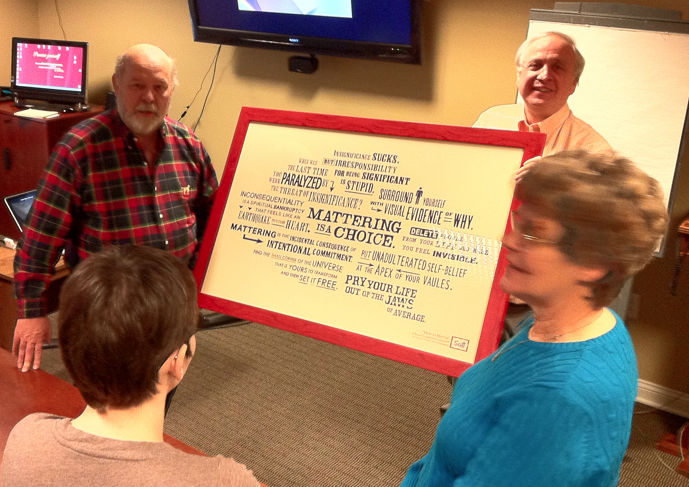 “It’s not about the art – it’s about the person you become as you create the art.”
“It’s not about the art – it’s about the person you become as you create the art.”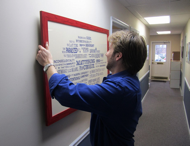 “It’s not about the art – it’s about the person you become as you create the art.”
“It’s not about the art – it’s about the person you become as you create the art.”